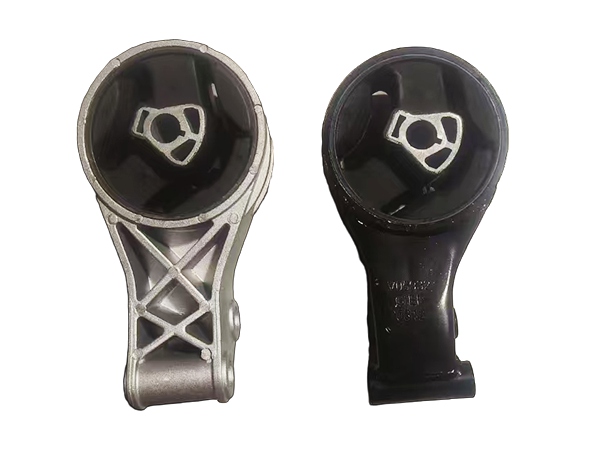
Customization of Engine Mounting Rubber
Description: The customization of engine mounting rubber is a sophisticated engineering process focused on tailoring the performance characteristics of a mount to meet the specific requirements of a vehicle or application. It involves a meticulous adjus...
Mobile:+86 15833366044
Email:info@hengyuntaimetal.com
Product Description:
The customization of engine mounting rubber is a sophisticated engineering process focused on tailoring the performance characteristics of a mount to meet the specific requirements of a vehicle or application. It involves a meticulous adjustment of the rubber compound's formulation, the internal structure, and the overall geometry to achieve a desired balance between vibration isolation, stiffness, and durability.
The process begins with defining the performance goals. For a high-performance sports car, the objective may be to create a stiffer mount that minimizes engine movement during aggressive cornering and acceleration, thereby improving throttle response and handling precision. This often comes at the cost of increased vibration transfer. Conversely, for a luxury sedan, the primary goal is supreme comfort. Engineers will customize a softer mount with a specific damping characteristic to isolate even the faintest engine vibrations, ensuring a silent and smooth cabin experience.
The key to this customization lies in the rubber compound itself. By altering the blend of natural and synthetic rubbers, along with additives like carbon black and curing agents, engineers can dramatically change the mount's properties. They can adjust its hardness (durometer), resilience, resistance to heat and oil, and its damping coefficient. Furthermore, the internal design is crucial. Custom mounts may incorporate complex void structures, liquid-filled chambers, or specialized bonding techniques to fine-tune their dynamic response.
Beyond passenger comfort, customization is critical for specialized vehicles. Heavy-duty trucks require mounts engineered to handle significantly higher weights and torque. Electric vehicles (EVs) present a new challenge: their mounts must be tuned to dampen the different frequency vibrations of an electric motor and support the immense weight of the battery pack, all while enduring a different set of environmental conditions.
In summary, customizing an engine mounting rubber is not a one-size-fits-all operation. It is a precise exercise in material science and mechanical design, transforming a simple component into a tuned element that is integral to the vehicle's character, performance, and refinement.
-

Common Issues and Safety Hazards of Insulation Layer Damage in Battery Press Plates
2025-08
-

In-Depth Analysis of Loosening Issues in Automotive Hardware Fittings
2025-08
-

Quality Control and Inspection Methods for Automotive Hardware Fittings
2025-08
-

Automotive Metal Stamping Parts: Process, Applications, and Advantages
2025-08




